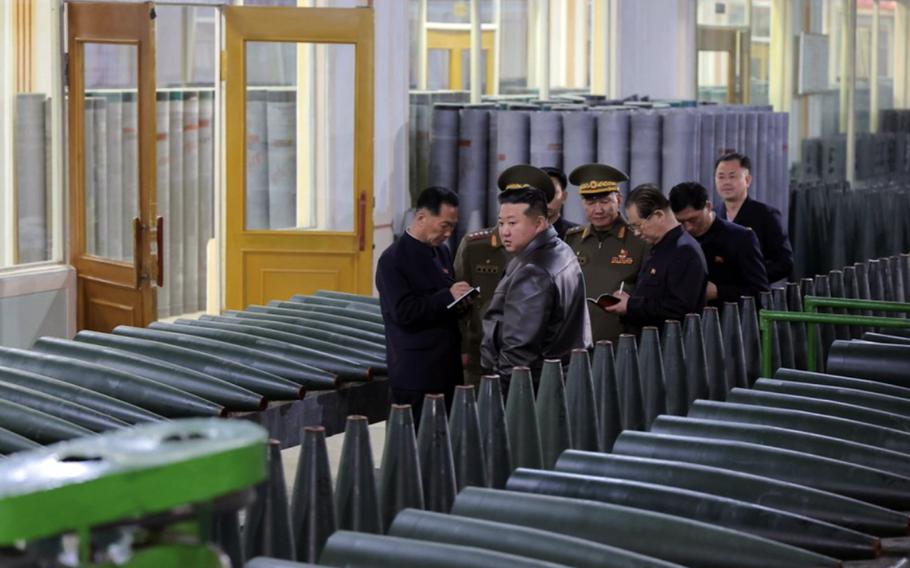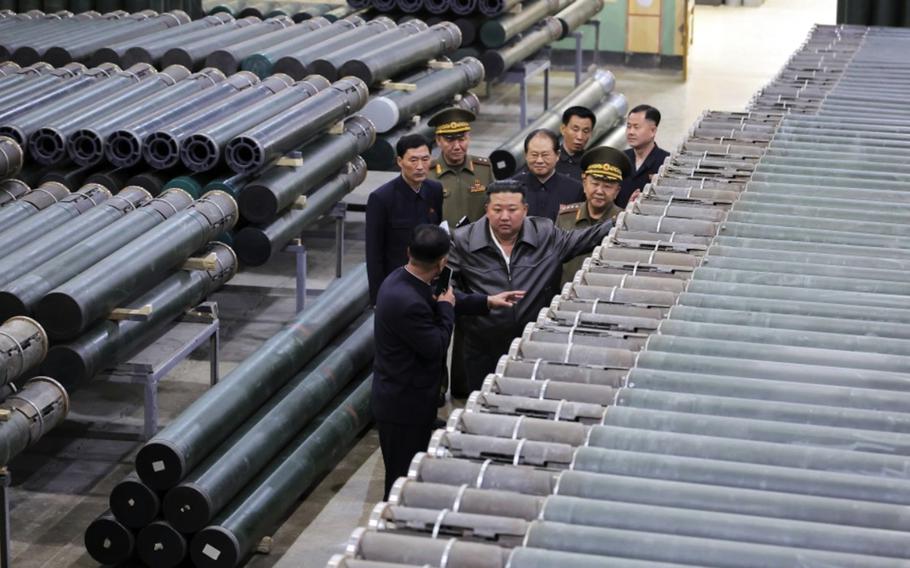
North Korean leader Kim Jong Un inspects a Pyongyang weapons factory in this image released by the Korean Central News Agency on May 7, 2025. (KCNA)
SEOUL, South Korea — North Korea’s authoritarian leader ordered his nation’s munitions factories to accelerate artillery shell production, even as state media boasted of new records set in munition production rates, the state-run Korean Central News Agency reported Wednesday.
Kim Jong Un toured a weapons factory in Pyongyang and was briefed on efforts to boost shell production, according to KCNA. The report did not specify the date of his visit.
The U.S. and South Korean militaries have accused the North of sending a host of lethal military aid to Russia, including 152 mm shells, short-range ballistic missiles and between 10,000 and 12,000 troops.
South Korean lawmakers, citing closed-door briefings from the National Intelligence Service last month, have said the North is estimated to have shipped thousands of containers holding up to six million artillery shells to Russia by sea since 2022.
North Korea is producing artillery shells at four times its annual average, or double its previous record, KCNA reported without disclosing specific numbers.
The agency said the country’s production process has “reached a high level,” with shell manufacturing capacity growing “at high speed.”

North Korean leader Kim Jong Un inspects a Pyongyang weapons factory in this image released by the Korean Central News Agency on May 7, 2025. (KCNA)
North Korea often refers to long-range missiles as artillery shells. The regime has been banned from conducting ballistic missile tests by the U.N. Security Council since 2016.
In March, KCNA described 600 mm munitions fired in a multiple-rocket launcher drill as artillery rockets. However, South Korean military officials, U.S. Indo-Pacific Command and independent experts characterized those rounds as ballistic missiles, based on their size and the distance — about 185 miles — they traveled.
Wednesday’s report made no mention of North Korea’s export of artillery shells to Russia. However, on April 28, Pyongyang publicly acknowledged it is supplying Moscow with troops for its three-year war with Ukraine.
Russian President Vladimir Putin described the North’s casualties as “Korean heroes who gave their lives” for Moscow, according to a news release from the Office of the President on April 28.
South Korea’s intelligence service estimates that about 4,100 North Korean troops have been wounded and 600 killed while fighting for Russia, Rep. Lee Seong Kweun of the People Power Party told reporters April 30 in Seoul.
The commander of U.S. Forces Korea, Army Gen. Xavier Brunson, described Russia as the North’s “original major benefactor,” during testimony before Senate lawmakers on April 10.
“In return, Russia is expanding sharing of space, nuclear, and missile-applicable technology, expertise and materials to [North Korea],” he said. “Russia’s expanded cooperation will enable advancements of [North Korea’s] weapons of mass destruction program across the next three to five years. Contrary to predictions of collapse due to food shortages, [North Korea] is more stable than ever …”